Meet a Monitor: Aisha and Sasha

Sasha and Aisha, sixth-grade students in the Roberto Clemente Math, Science and Computer Science magnet program, conducted an investigation into how proximity to roadways influences water pollution in local lakes. Their research titled, “The Effect of Road Salt on Water Quality”, was presented at Roberto Clemente Middle School’s first annual STEM night held February 2025.
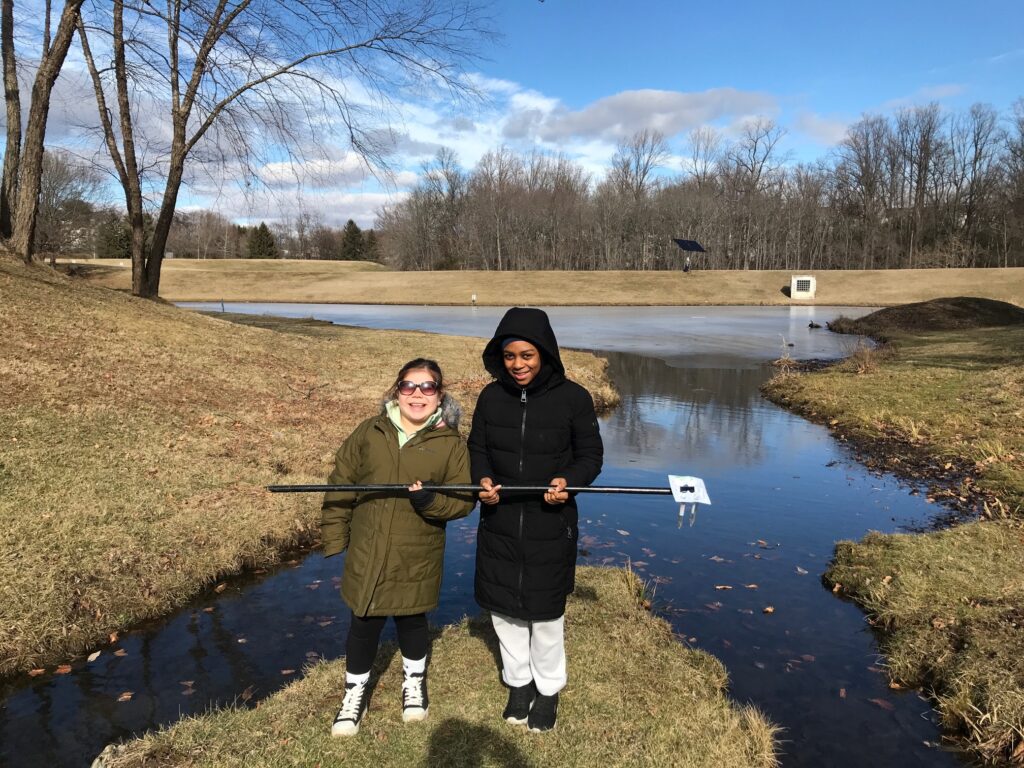
Sasha was first inspired to think about the issue of road salt pollution when talking to Izaak Walton League of America staff during a local farmers market in Gaithersburg, Maryland. In class, their science teacher discussed local streams, lakes and the interconnectivity of watersheds as well as diverse animal and plant life within the habitats. Thinking about the STEM project ahead, Aisha wanted to look closer at these habitats and how human actions affect them.
According to Sasha, “We noticed how often salt trucks pass by our homes and schools in winter, and we wondered where all that salt went after the snow melted. It seemed like a simple question, but when we researched, we learned salt runoff can harm freshwater ecosystems.”
Combining what they learned in class and were seeing in their communities, Aisha and Sasha decided to design a study to examine salt levels in local water habitats. Aisha stated that, “We wanted to make sure our local waters stayed healthy.”
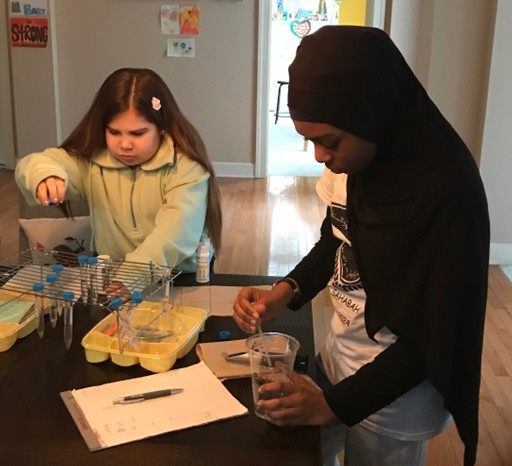
With this background information and project idea, Aisha and Sasha set to work. Their study compared four lakes—two near large roads (Montgomery College and Gunners Lake) and two in quieter, residential areas (Montessori School Lake and Lake Nirvana). Using tools such as a refractometer and a Tetra water test kit, they measured salinity, chloride, nitrate, and ammonium levels in each lake. They sampled the water from the shoreline in the lakes right after a snowfall when salt application had occurred. They also made sure to document weather conditions to account for temperature and precipitation in the analysis.
Their results showed that lakes closer to major roadways had elevated salt levels and slightly poorer water quality, supporting the hypothesis that road salt runoff significantly impacts nearby water ecosystems. While their hypothesis was supported, both students were surprised by how consistently the lakes near busy roadways showed higher salinity (and increased levels of chloride) when compared to lakes in quieter residential areas. Sasha stated, “It was eye-opening to see that even slight increases in salt can affect water chemistry and potentially stress aquatic life over time.”
In their project, the students highlighted several environmental concerns caused by excessive road salt, including harm to aquatic life, plant damage, and risks to wildlife. Their work emphasized the importance of responsible salt use and encouraged the exploration of safer alternatives. Both Sasha and Aisha emphasized that community awareness is important and that using salt sparingly and switching to alternatives can help protect our waterways without compromising safety. It is also impactful to help your neighbors and community members understand the importance of smart salting and the impact of salt runoff on habitats.
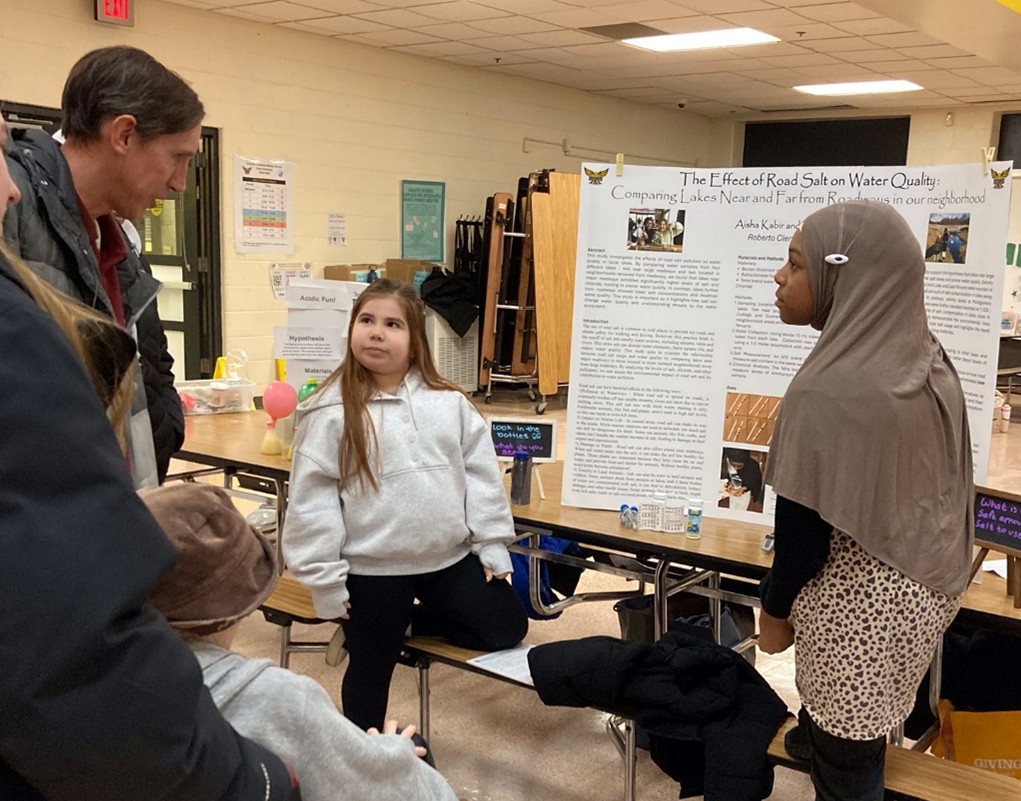
When asked “What is the biggest lesson you learned as young scientists?” Aisha responded, “That patience and persistence pay off—science often takes careful planning and repeated trials.” Sasha answered, “And that our work, even as sixth graders, can contribute meaningful information to help protect our environment and watersheds.”
For future research, they plan to expand their sampling to include more sites, to measure other pollutants like heavy metals (in addition to their current parameters), to examine changes that occur over different seasons, to study the effects of salt on specific aquatic species, and to test the environmental impacts of alternative de-icing substances.
Sasha and Aisha’s project stands as a thoughtful and data-driven contribution to environmental awareness and conservation efforts and a reminder that young scientists can spark real change. By asking questions, gathering data, and sharing results, anyone can help their community make more informed, earth-friendly choices.
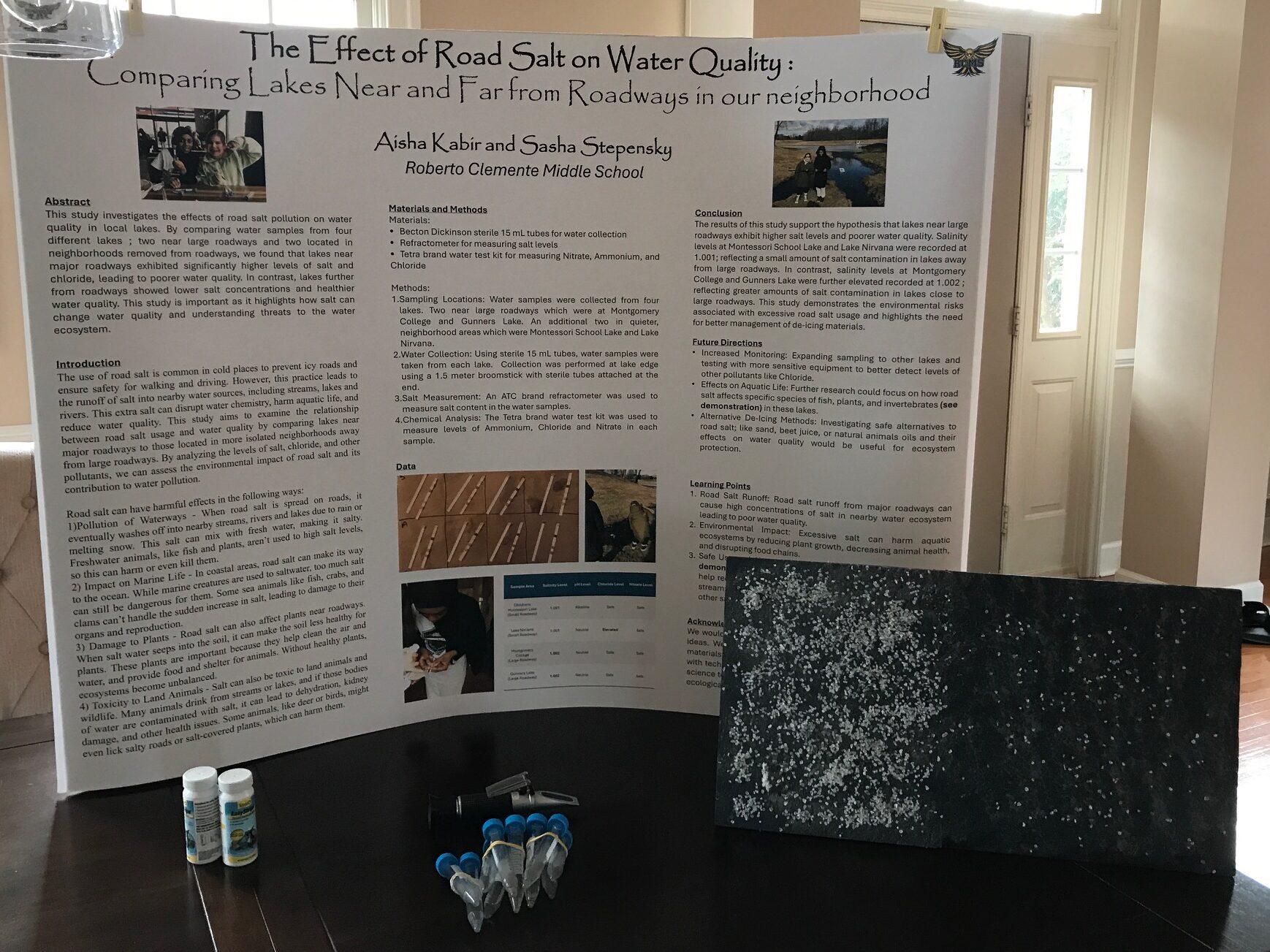
Special thanks to Vitaly Stepensky for helping this Meet a Monitor blog come to life.
 Your kit will include a bottle containing 25 nitrate test strips which you can use to test your water source(s) throughout the year. You’ll also receive postcards explaining how to use your nitrate test strips and how to share your Nitrate Watch results on the Clean Water Hub.
Your kit will include a bottle containing 25 nitrate test strips which you can use to test your water source(s) throughout the year. You’ll also receive postcards explaining how to use your nitrate test strips and how to share your Nitrate Watch results on the Clean Water Hub.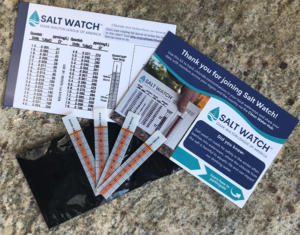 Your kit will include four test strips so you can test your waterway throughout the season. You’ll also receive a chart to help you interpret your results and a postcard with instructions for completing a Salt Watch test and reporting your findings.
Your kit will include four test strips so you can test your waterway throughout the season. You’ll also receive a chart to help you interpret your results and a postcard with instructions for completing a Salt Watch test and reporting your findings.